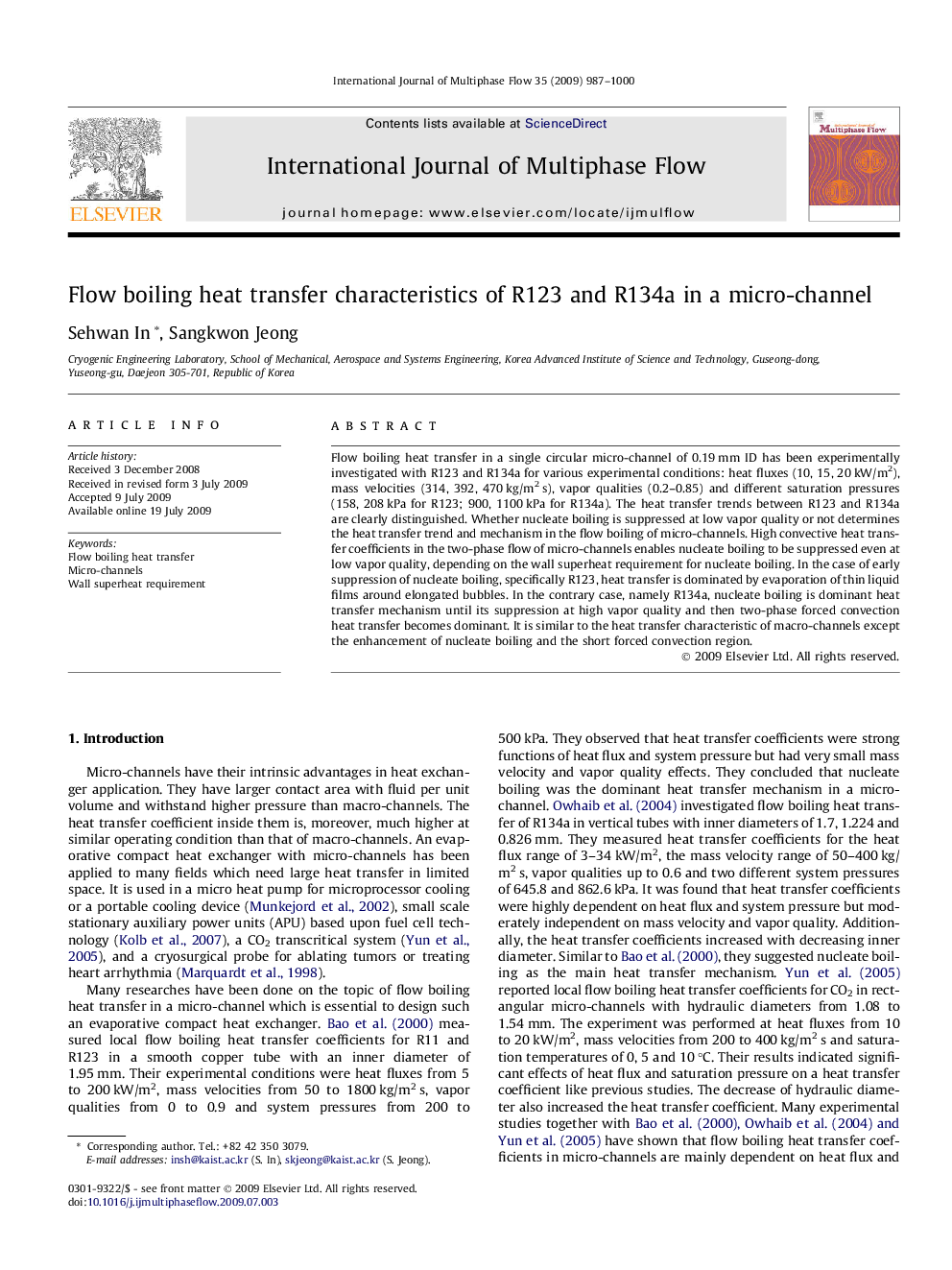| Article ID | Journal | Published Year | Pages | File Type |
|---|---|---|---|---|
| 667428 | International Journal of Multiphase Flow | 2009 | 14 Pages |
Abstract
Flow boiling heat transfer in a single circular micro-channel of 0.19Â mm ID has been experimentally investigated with R123 and R134a for various experimental conditions: heat fluxes (10, 15, 20Â kW/m2), mass velocities (314, 392, 470Â kg/m2Â s), vapor qualities (0.2-0.85) and different saturation pressures (158, 208Â kPa for R123; 900, 1100Â kPa for R134a). The heat transfer trends between R123 and R134a are clearly distinguished. Whether nucleate boiling is suppressed at low vapor quality or not determines the heat transfer trend and mechanism in the flow boiling of micro-channels. High convective heat transfer coefficients in the two-phase flow of micro-channels enables nucleate boiling to be suppressed even at low vapor quality, depending on the wall superheat requirement for nucleate boiling. In the case of early suppression of nucleate boiling, specifically R123, heat transfer is dominated by evaporation of thin liquid films around elongated bubbles. In the contrary case, namely R134a, nucleate boiling is dominant heat transfer mechanism until its suppression at high vapor quality and then two-phase forced convection heat transfer becomes dominant. It is similar to the heat transfer characteristic of macro-channels except the enhancement of nucleate boiling and the short forced convection region.
Related Topics
Physical Sciences and Engineering
Chemical Engineering
Fluid Flow and Transfer Processes
Authors
Sehwan In, Sangkwon Jeong,
